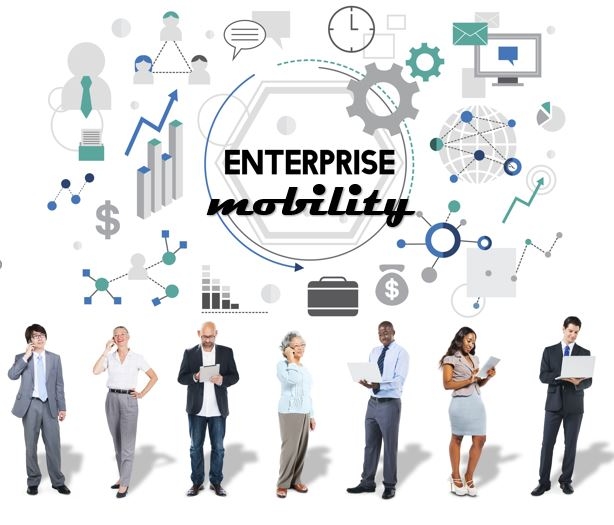Your company should become more mobile as the world becomes more mobile. Because of the widespread use of smart devices, workplace mobility has become critical. Every aspect of business, including data management, security, collaboration, customer experience, and productivity, has been addressed by enterprise mobility. Businesses that do not prioritize mobility risk being disrupted by the digital transformations that are sweeping the industry.
CEOs are embracing mobile-first strategies for a variety of reasons, including increased availability, secure data, easy sharing, and a superior user experience. It is critical to be aware of trends because we live in a technologically advanced era. Without further ado, let’s take a look at the enterprise mobility technology trends for 2021 that will help you improve your company’s operations and stay competitive.
Technology Trends in Enterprise Mobility in 2021
Augmented and Virtual Reality (AR and VR) Have a Lot of Potential (VR):
The combination of augmented reality and virtual reality has the potential to transform the enterprise mobility landscape as a whole through immersive experiences. Businesses create augmented and virtual reality apps to increase engagement, streamline processes, and create game-changing products.
Artificial intelligence will improve these technologies, and 5G will be able to provide high-speed, high-quality service to businesses that rely heavily on augmented and virtual reality technologies
Artificial Intelligence’s Growing Influence (AI):
Given the global impact of AI-powered chatbots, virtual assistants, natural language processing, and machine learning, it’s no surprise that CIOs have prioritized it as a top investment priority. With mature smartphones, anomaly detection, sentiment analysis, automated reasoning, data mining, robotics, and predictive analytics, it has the potential to revolutionize mobility. Enterprise mobility devices with AI capabilities can help businesses become smarter by improving workflow viability.
ApplicationTechnology’s Importance in Business
Application development can improve enterprise mobility in a variety of industries, including healthcare, travel, logistics, retail, education, and field force management. It has the ability to create customized applications that will be installed on the devices of employees. Applications can be used to track the location of mobile devices and increase productivity, compliance, and security. Enterprise mobility management and mobile device management benefits from App system.
Contextual Communication’s Importance:
Mobility and the customer experience are inextricably linked concepts. If you own a business, you can use mobility technology to personalize your communications to your customers based on their previous behavior, preferences, and purchase history. Contextual communication is information exchanged between two people who are both aware of the social, cultural, and environmental contexts in which they are interacting. It aids in determining the needs of customers and establishing long-term relationships with them.
Bring Your Own Device (BYOD) Policy
Businesses all over the world are adopting the BYOD model to improve adaptability, cut costs, boost productivity, and increase employee satisfaction. It is critical to ensure that employees’ devices are properly configured with security protocols and that they adhere to data protection standards and the BYOD policy in order to embrace and implement the BYOD model effectively.
Compliance Issues Can Be Addressed:Effectively With Enterprise Mobility
As mobility waves intensify, business transactions conducted via mobile devices have grown in popularity. Compliance, safety, and regulations, on the other hand, should never be jeopardized during the process. With GDPR and CCPA regulations in place, everyone is concerned about security. To ensure confidentiality, businesses are heavily investing in mobile compliance and maintaining the integrity of designated content.
Employee Mobility in the Workplace Mobility, in the form of apps, has the potential to boost workplace productivity significantly. For official tasks like email, video conferencing, and chat, employees rely heavily on mobile apps. Slack, Skype, Chanty, Ryver, and Fleep are some of the best examples. Employee engagement and retention are increasing as a result of mobility. As a result, they will be able to better justify their work and perform more effectively.
In a Hybrid Cloud Computing Environment:
In recent years, the term “hybrid cloud” has gained popularity in the business world. Hybrid cloud technology is used by businesses to improve remote workforce support, security, adaptability, data management, and risk management. Hybrid clouds are used by businesses to optimize and speed up workflow and production
Impact of 5G on Enterprise Mobility
The 5G waves will usher in a revolution that will boost remote work productivity, reduce latency, improve IoT device performance, and accelerate mobile app performance. In terms of connectivity and speed, 5G is expected to be ten times faster than 4G, making it an ideal technology for improving communication, increasing network reliability, and improving customer experience. In general, 5G will improve mobility while also increasing productivity and profitability.
Are you aware that 5G has the potential to shape the future of enterprise mobility by enhancing AI, IoT, augmented reality, and virtual reality technologies while also significantly improving mobile connectivity?
US-based recruitment process outsourcing company (https://rpo.techfetch.com/)Techfetch RPO’s spokesperson Ms.Mariana Joseph Says that “These trends must be considered because the mobility ecosystem has enormous untapped potential that must be realized by 2021.
The transformation of mobility is a continuous process. Startups and businesses must embrace these latest trends to stay relevant, outperform the competition, and scale their operations. Assume you have a great idea that you’d like to put into action. All you’ll need in that case is a business partner who can help your company navigate the sea of disruptions by leveraging enterprise mobility trends”. Read More




